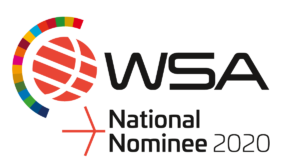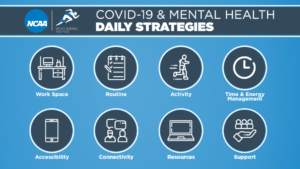Selected as Best National Digital Solution for the International Award in Health and Well-Being
HACK THE GAPS – DIGITAL SOLUTIONS FOR THE UN SDGS: THE WSA NOMINEES OF 2020
Milan/San Diego/Salzburg
2 November 2020
Professor Giuseppe Riva, Professor Brenda K Wiederhold and Dr. Luca Bernardelli are pleased to announce that COVID Feel Good HAS BEEN SELECTED AS BEST NATIONAL DIGITAL SOLUTION FOR THE INTERNATIONAL AWARD IN THE HEALTH AND WELL-BEING CATEGORY.
Smart content combined with optimized utilization of state-of-the-art technology offers immense opportunities to close global and local divides and the achievement of the UN SDGs. COVID Feel Good was nominated as best national digital solution for Italy for the international WSA Award, selecting digital innovations with a positive impact on society. With this nomination in the Category Health and Well-being, COVID Feel Good qualifies for evaluation by the WSA Online Jury 2020 among over 340 international nominations – showcasing the global dimension of digital innovation, from Canada to Indonesia, from Finland to Mozambique.
The WSA nominees 2020 show the richness, diversity, future, and innovation of digital solutions on a global scale and prove how digital technology can improve society on each corner of the world.
COVID Feel Good has been selected as best national digital solution for Italy for the international WSA. But it reaches beyond the borders of Italy and has become a truly international effort, with over 10 countries now participating in this Positive Technology initiative.
Living in the time of the coronavirus means experiencing not only a global health emergency but also extreme psychological stress that puts a strain on our identity and our relationships.
COVID Feel Good is a weekly social self-help protocol based on a virtual reality experience, requiring just twenty minutes daily, helping you in relieving anxiety and stress and improving well-being and social connectedness.
https://www.covidfeelgood.com/home
It is FREE and it requires just TWENTY MINUTES everyday for a week.
VR Video, Protocol and Instructions in English, Español, Français, Português do Brasil, Italiano, 한국인, 日本語, Deutsche, Català and Türkçe are available below.
Please help us in spreading this protocol by posting in your social accounts our videos (in English, Spanish, French, Brasilian/Portoguese, Italian, and Catalan)
The WSA 2020 nominees will be evaluated based on seven fundamentals criteria: Content, Functionality, Design, Technology, Innovation, Impact and Value.
“WSA combines two major perspectives in its initiative – first the commitment of the UN SDGs, and how to use ICTs for development. And second the development of a global knowledge society. The UN SDGs must be our measurement – in terms of what to look at and where to look. Today we are living in a completely different environment – through the mobile revolution, through the emergence of the algorithmic age – data has become capital just as much as labour, land, money and machinery. Hence, it is more important than ever to fully evaluate what excellent content is and what it really offers in terms of solutions and impact. Qualitative, local content has become the key and permanent issue. WSA presents innovation that uses ICT for social connectivity. To connect for impact.“ WSA Chairman Peter A. Bruck states.
The WSA nominees are selected carefully and highly competitively by the WSA National Experts from more than 184 UN member states. The WSA National Experts nominate up to eight projects for each country – one for every WSA category.
A nomination to the WSA hence is already an award in itself – the qualification to compete and compare on an international level and being the best practice in Health and Well-being nationally.
About the WSA
The WSA is a global initiative within the framework of the United Nations World Summit on the Information Society (WSIS). WSA is the only ICT event worldwide that reaches the digital driven social impact community in over 180 countries. WSA highlights digital content that is improving society and focuses on local content with global relevance.
Visit us on www.wsa-global.org, Facebook, Twitter, Instagram and LinkedIn, #WSA20
Media Contact WSA:
Manuela Wagner
WSA Global Community Manager
manuela@wsa-global.org
+43.660.630408.7
Help us to help bring healing to people around the globe:
Professor Giuseppe Riva
Scientific Coordination
Catholic University of Sacred Heart
Istituto Auxologico Italiano
Milan, Italy
Professor Brenda K. Wiederhold
Clinical Coordination
Virtual Reality Medical Center
Interactive Media Institute, a 501c3 non-profit
Licensed Clinical Psychologist in U.S. and Belgium
Dr. Luca Bernardelli
VR Development Coordination
CEO, Become-Hub
Milan, Italy




